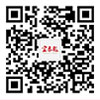Special process control: melting furnace and annealing furnace
1.The furnace focuses on controlling the constant copper liquid level, charcoal coverage, constant temperature, cooling water flow, casting process (pulling speed, reverse push, etc.), and grain size control. It is important to pay attention to the graphite mold and copper sleeve. surplus control.
2. The annealing furnace focuses on controlling the vacuum degree, holding temperature and time, the air tightness inspection of the purge rod connection, the vacuum should not be lifted into the heating furnace, etc. Others such as the cooling temperature of the furnace in summer, the positive pressure of the furnace, and the cooling pool The air temperature and air flow, the furnace chamber just after annealing is not close to the furnace chamber before it is released, the stacking height of the thin-walled tubes is controlled when they are loaded into the furnace, and the cooling spray holes are not blocked, etc. all need to be controlled.
Key processes: milling, rolling, stretching (disc pulling, flying saw, drawing and cutting), flaw detection, rewinding
1. Milling, rolling and drawing: ① Face milling focuses on controlling the milling amount, no milling deviation, no steps, no knife tumors, burrs, etc. Pay attention to the forward and reverse rotation when the milling motor is repaired. ②The rolling mill pays attention to the control of mechanical properties, nitrogen saving, head and tail rolling speed is not too fast, the speed and matching of main and auxiliary machines, the flow and temperature of primary and secondary cooling water, no scratches at the water outlet of the pipe, uniform water discharge from the water spray ring without clogging, oil injection for winding No scratches, uniform pitch, etc. ③The joint drawing machine mainly controls the straightness of the first and second drawing pipes, the synchronization of the respective trolleys of the first and second drawing, the size and eccentricity of the pipes, no scratches in each channel, artificial straightening of the head and tail to prevent head and tail damage, and no winding. Rubbing and so on.
2. Stretching: ① The key control of coil pulling is that the stretching system has no stretching eccentricity in the tangential direction of the reel, the runout of the pressure roller system, the reel and rollers (including guide rollers, straightening wheels, discharge rings, and guide sleeves) , Shock absorbing wheel) surface inspection (no groove, roughness and copper sticking, etc.) Groove etc. ②The key points of drawing cutting and flying sawing are joint drawing control, cleaning, straightening of horizontal and vertical systems, length, inner wall cleaning (manufacturer's pipe must be cleaned twice) and ovality control.
3. The flaw detection focuses on flaw detection parameter control, ink tank weight check, inkjet position and length (whether the encoder is intact), accurate probe installation, sample tube inspection, accurate number of damage points, etc.
4. The key point of rewinding is that the rewinding layer is clear and not chaotic, the plane on the disk is not uneven, the disk height is qualified, the ellipticity of the thin-walled tube, the printing is qualified, clean, and the roller has no pores, roughness, copper sticking and bruises, etc. defect.
Other process control points:
1. When cleaning the inner wall of the straight copper tube, it is important to ensure that the inner wall is clean and no cotton balls are left behind.
2. Focus on checking that the lower end of the thin-walled tube is free of bumps and deformations (prevention of tube jamming) for large-pack packaging.
3. When straightening straight copper pipes, do not take an old man to straighten them, and do not leave copper shavings in the material box to prevent the copper pipes (especially semi-rigid pipes) from being damaged.
4. The scale must be self-calibrated in each shift to ensure accurate weighing.
5. The straight-drawing machine should focus on preventing bumps and injuries (the material receiving frame is intact), and the semi-rigid pipe needs to be manually connected to prevent scratches.
6. The copper pipes produced by all processes must have bright channels, no rough surfaces, no sticking copper, etc.
Process exception control:
1. The spiral pattern on the surface of the disc stretching is mainly due to the problem of stretching process. For example: for copper pipes with a specification of 8*1.2, if the wrong core head was used in the previous production to produce a pipe with a wall thickness of 1.15, then when it is transferred to the next process of producing copper pipes with a wall thickness of 1.2, it will cause empty drawing with the ball, A spiral pattern appears on the surface.
2. When the disc is stretched, the lubricating oil level is low, and the oil pump is insufficient to lubricate poorly during stretching, and there is no lubrication on the side of the pipe, and there will be a problem of large signal during flaw detection of the stretched product.
3. When the disc is stretched, wrinkles appear on the overall outer surface. The reason is that the elongation coefficient of the pass before the finished product pass is too large (the amount of wall reduction is too large), and the other reason is caused by poor lubrication of the lubricating oil (lubricating oil use time Too long, not replaced in time).
Whether it is quality inspection, operators, or managers, they must be able to distinguish and be familiar with the key control requirements of the production process, and carry out key follow-up inspections in daily life, and then continuously summarize and take measures to solve the abnormalities that occur in daily life. With the increase of experience and experience, the self-inspection and self-control of the subsequent production process will become more and more perfect, and many problems will be prevented.




